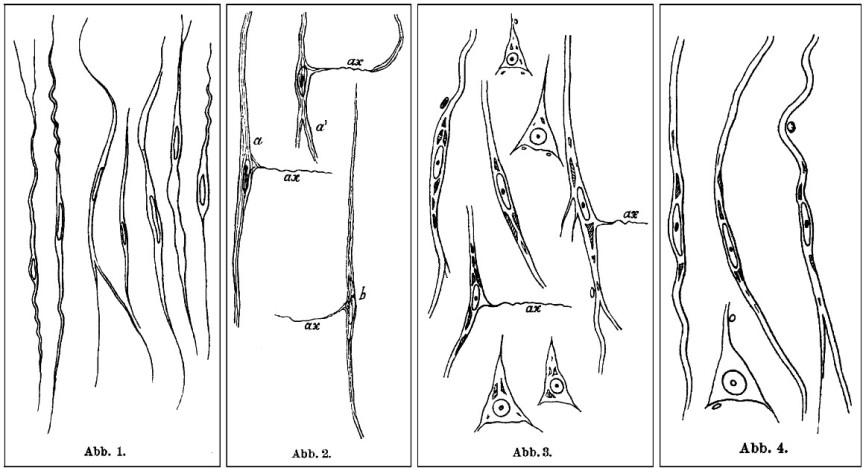A von Economo neuron, also known as a spindle neuron, is a unique cell with several interesting characteristics:
1) It has a long axon and on the opposite side of the cell body has only one long dendrite, resembling a spindle and hence the nickname.
2) It is to be found only in humans, apes, elephants, dolphins, whales, and a few other animals known for their intricate social structure.
3) In humans, they exist only in the frontal part of the brain.
4) It is thought to be important for social awareness.
In all fairness, these cells should be called Betz cells, or at least Ramón y Cajal cells because these neuroanatomists mentioned their existence in 1881 and 1904, respectively. But Betz already has his own neurons, and Ramón y Cajal, well… his fame is established already. But von Economo “made a more complete description of their morphology and mapped their specific locations in human cortex” (Allman et al., 2011)
So what do we know about von Economo? Quite a lot, thanks to Triarhou, an excellent biographer. Constantin von Economo (1876–1931) was born in Brăila, Romania to a wealthy family of Greek descent. Shorty after his birth, the family moved from Romania to Austria where the father acquired a “von” in front of his name by way of elevation to the rank of baron.
Von Economo went to medical school in Vienna, traveled a lot across the globe, graduated, spent some more time here and there learning psychiatry, physiology, neurology and such with some Big Names, then returned to Vienna where he followed the classic academic path (for his time). He was a prolific writer, having published at least 139 scientific works in a relatively short time.
Besides the spindle neurons, he is also known for publishing an awesome brain atlas in 1925 (with Georg Koskinas) and for investigating in detail a mysterious and weird disease, encephalitis lethargica (the ‘von Economo disease’). This disease has unknown causes to the day, partly because it is very difficult to study, having virtually disappeared form the face of the Earth after a furious epidemic in 1926. But about that enigma some other time.
For now, enjoy von Economo’s drawings.

Notes: 1) One last thing. Although according to Springer’s website the copyright for the von Economo paper I’m citing should have expired, Springer still charges a lot of money to obtain it (if you don’t have an institutional license like some of us, the fortunates, that is). I have attempted to contact Springer about it with no luck. Anyway, if you want it, email me at scientiaportal@gmail.com. It’s been more than 70 years since the death of the author, so it should be public domain.
2) I have no idea why people reference the Ramón y Cajal’s Textura del Sistema Nervioso del Hombre y de los Vertebrados as published in 1889. I got it from Google Books and it says 1904 on it.
References:
- von Economo, C. (1926). Eine neue Art Spezialzellen des Lobus cinguli und Lobus insulae (‘A new kind of special cells in the cingulum and insula’). Zeitschr. Ges. Neurol Psychiatr (Berlin), 100: 706–712. DOI: 10.1007/BF02970950. ARTICLE
- Allman JM, Tetreault NA, Hakeem AY, Manaye KF, Semendeferi K, Erwin JM, Park S, Goubert V, & Hof PR (Apr 2011). The von Economo neurons in the frontoinsular and anterior cingulate cortex. Annals of the New York Academy of Sciences, 1225:59-71. PMID: 21534993. PMCID: PMC3140770. DOI: 10.1111/j.1749-6632.2011.06011.x. ARTICLE | FREE FULLTEXT PDF
- Triarhou, LH (14 Apr 2006, Epub 28 Feb 2006). The signalling contributions of Constantin von Economo to basic, clinical and evolutionary neuroscience. Brain Research Bulletin, 69 (3): 223–243. PMID: 16564418, DOI: 10.1016/j.brainresbull.2006.02.001. ARTICLE
By Neuronicus, 25 September 2016

